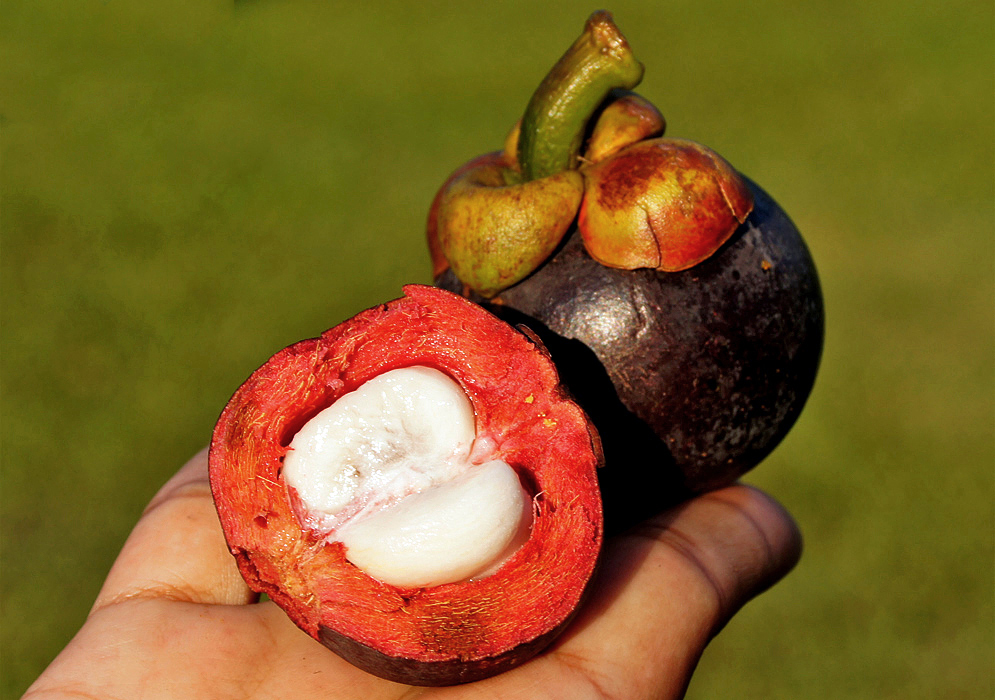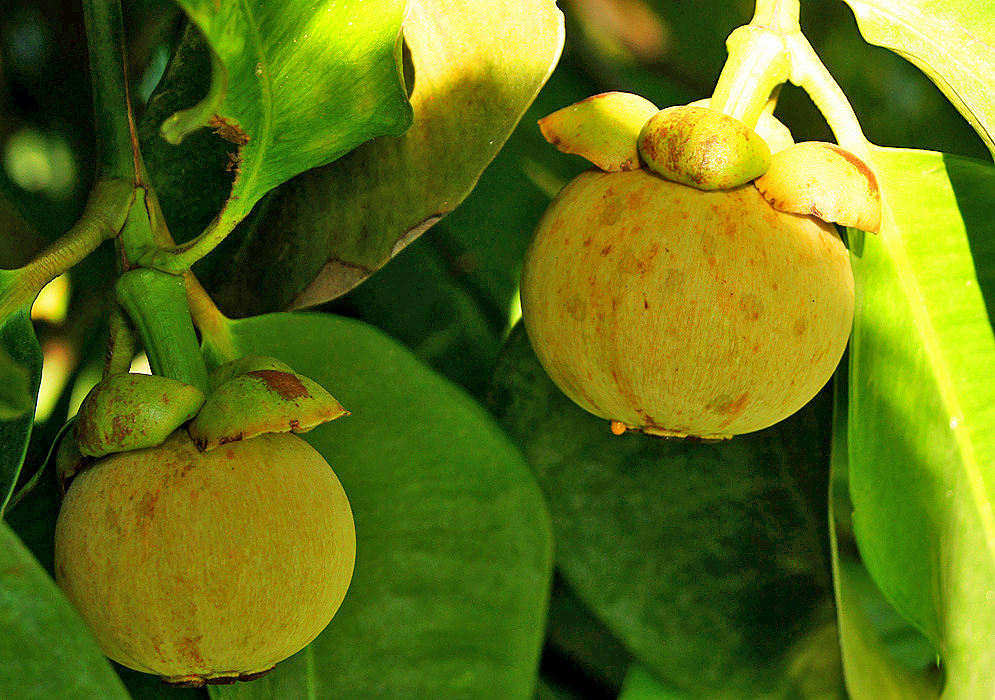This post has 11 Simple Fields-fields attached. Show fields.

Garcinia mangostana (Mangosteen)
Native to the rainforests of Malaysia and Indonesia, the Mangosteen is a slow-growing tropical tree, known for its delectable fruit. Mangosteen trees are dioecious, having separate male and female trees, but the female trees can produce seedless fruit without pollination. The fruit, especially its rind, is a rich source of antioxidants, xanthones, and other bioactive substances, offering a range of health benefits. It exhibits antitumoral, antiallergic, anti-inflammatory, antibacterial, and antiviral properties. The nutritional benefits include a good amount of carbohydrates, vitamin B9, vitamin C, and other minerals. Thailand is the leading producer and exporter. In Colombia it is called, Mangostino. The fruit is usually sold on the streets (sometimes in pick-up trucks) close to where it grows. The white juicy pulp is what is eaten and it is sweet and delicious. You can also eat the nutty seed inside the pulp (sometimes the pulp is free of seeds). If you are not able to push your thumb into the fruit it is best not to buy it. There is a large mangosteen orchid farm between Honda and Mariquita where you can buy the fruit wholesale. Photographed in Mariquita, Colombia.



